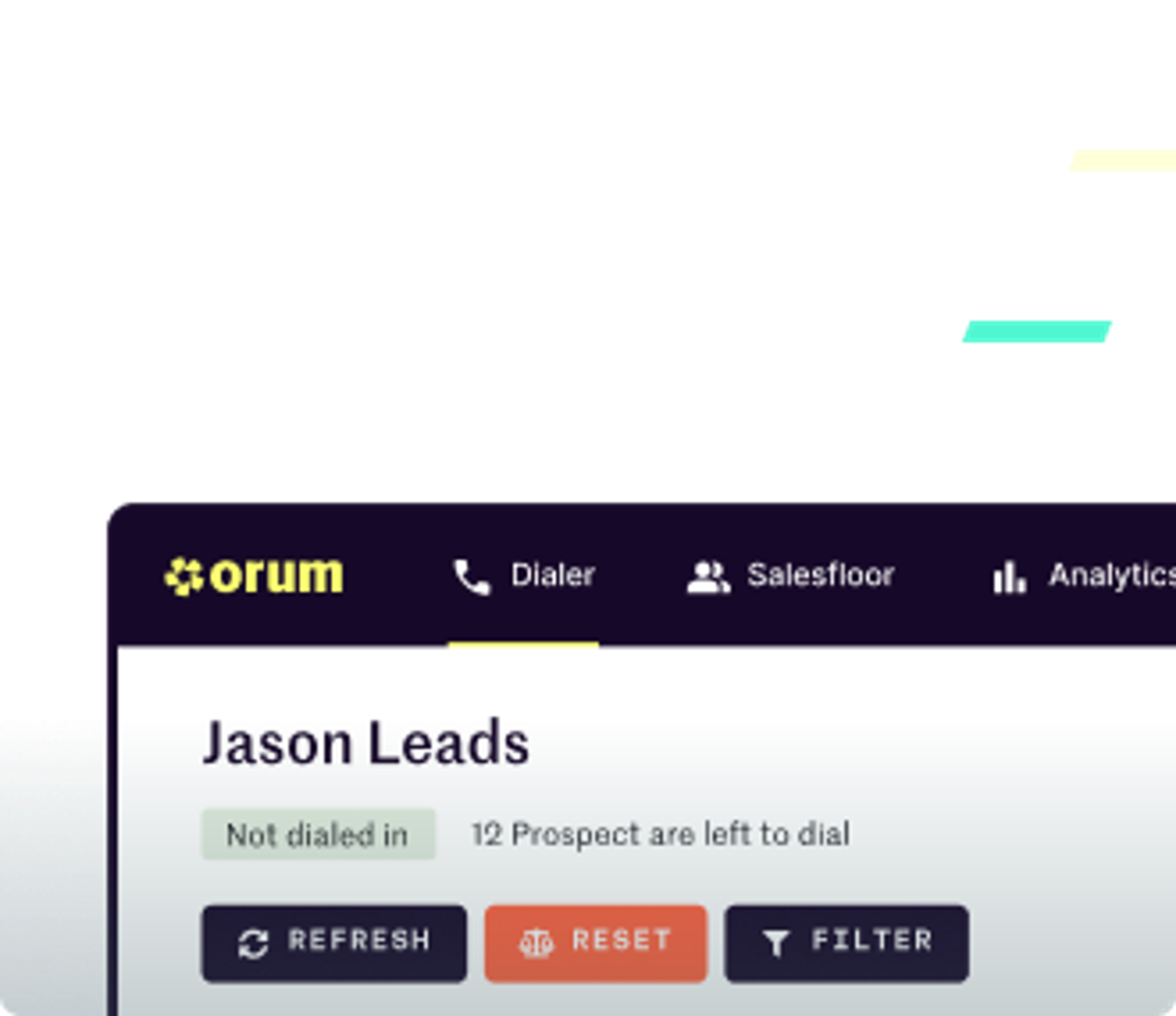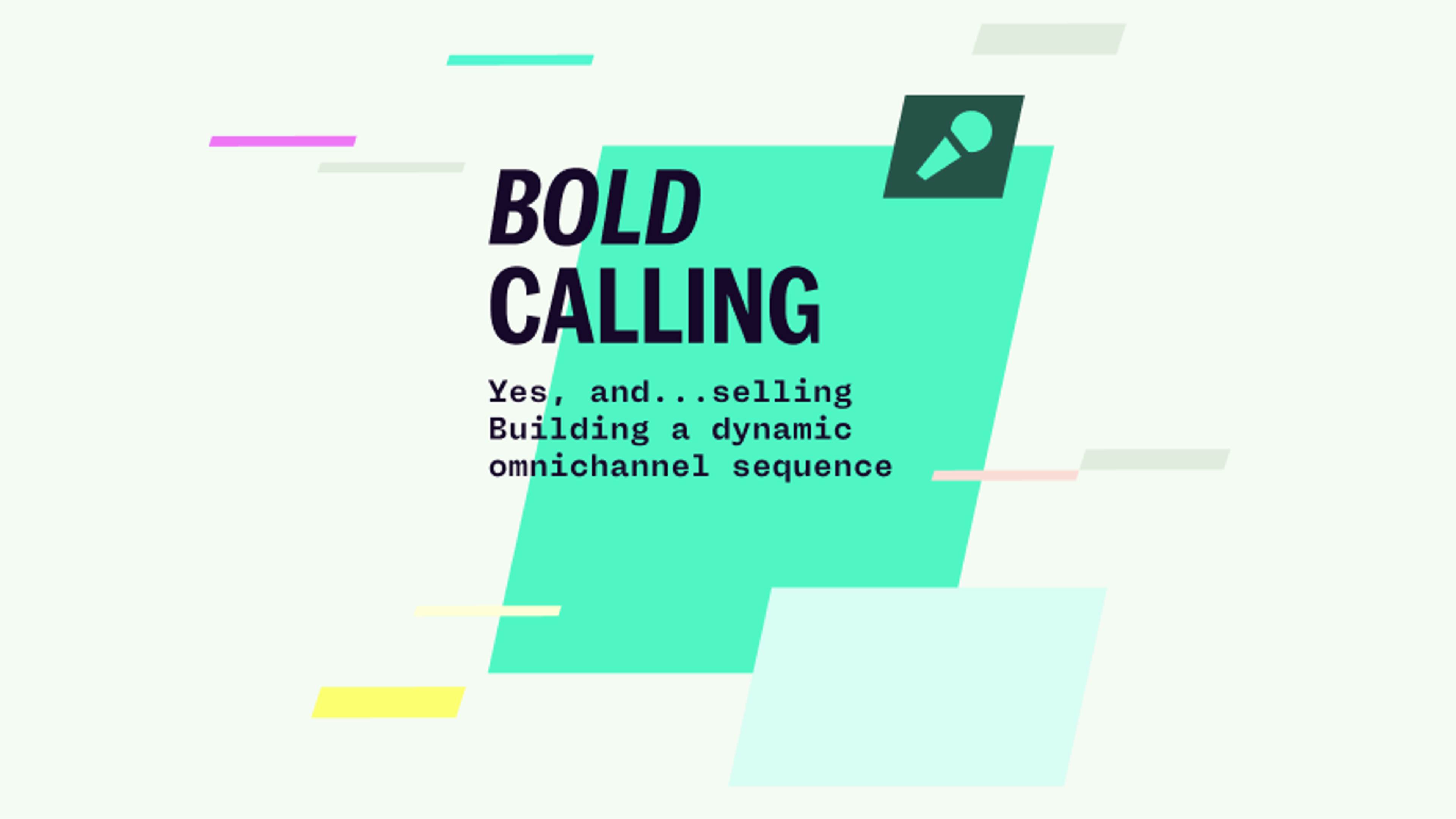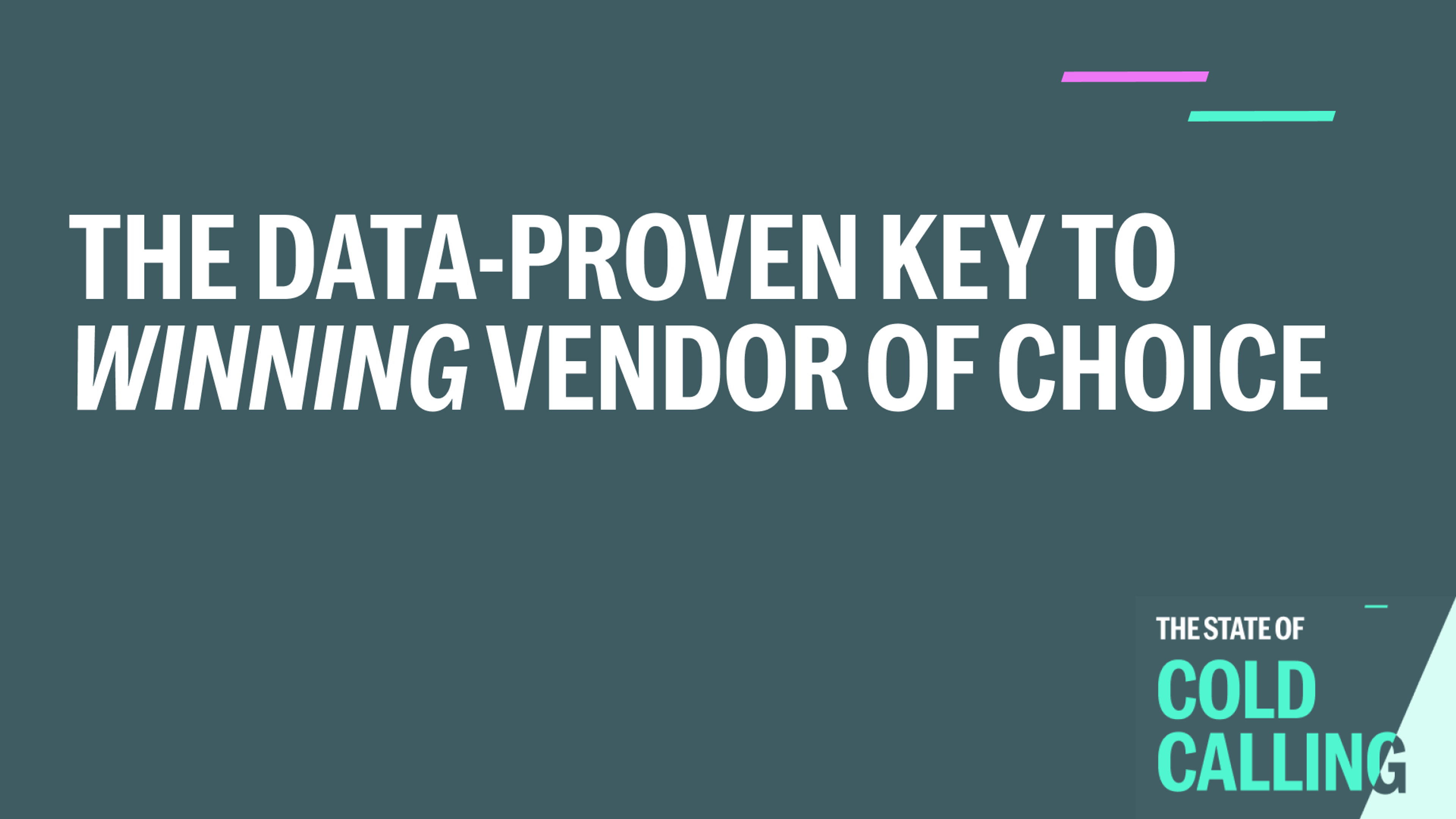7 SaaS Sales Pipeline Stages & Advanced Sales Strategies
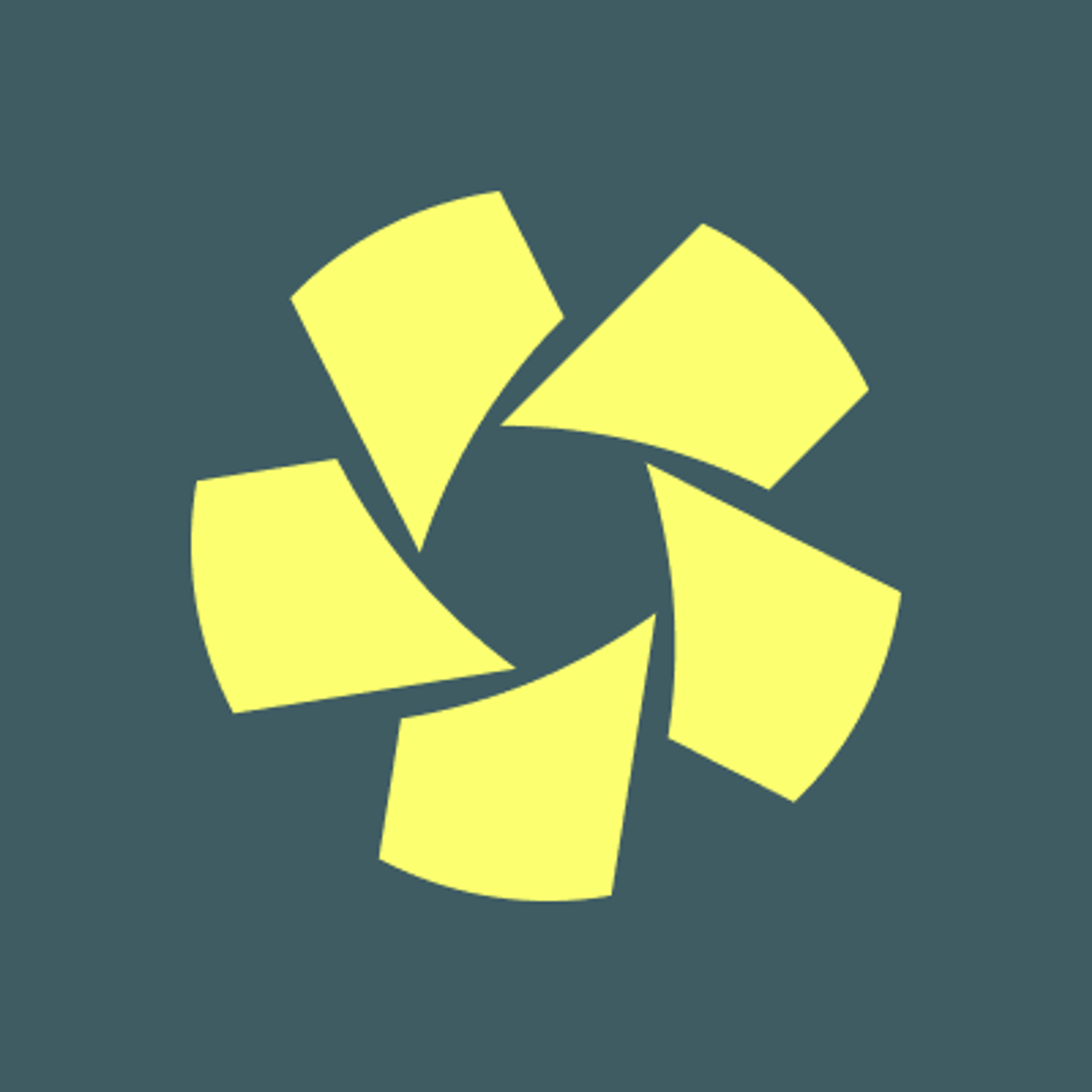
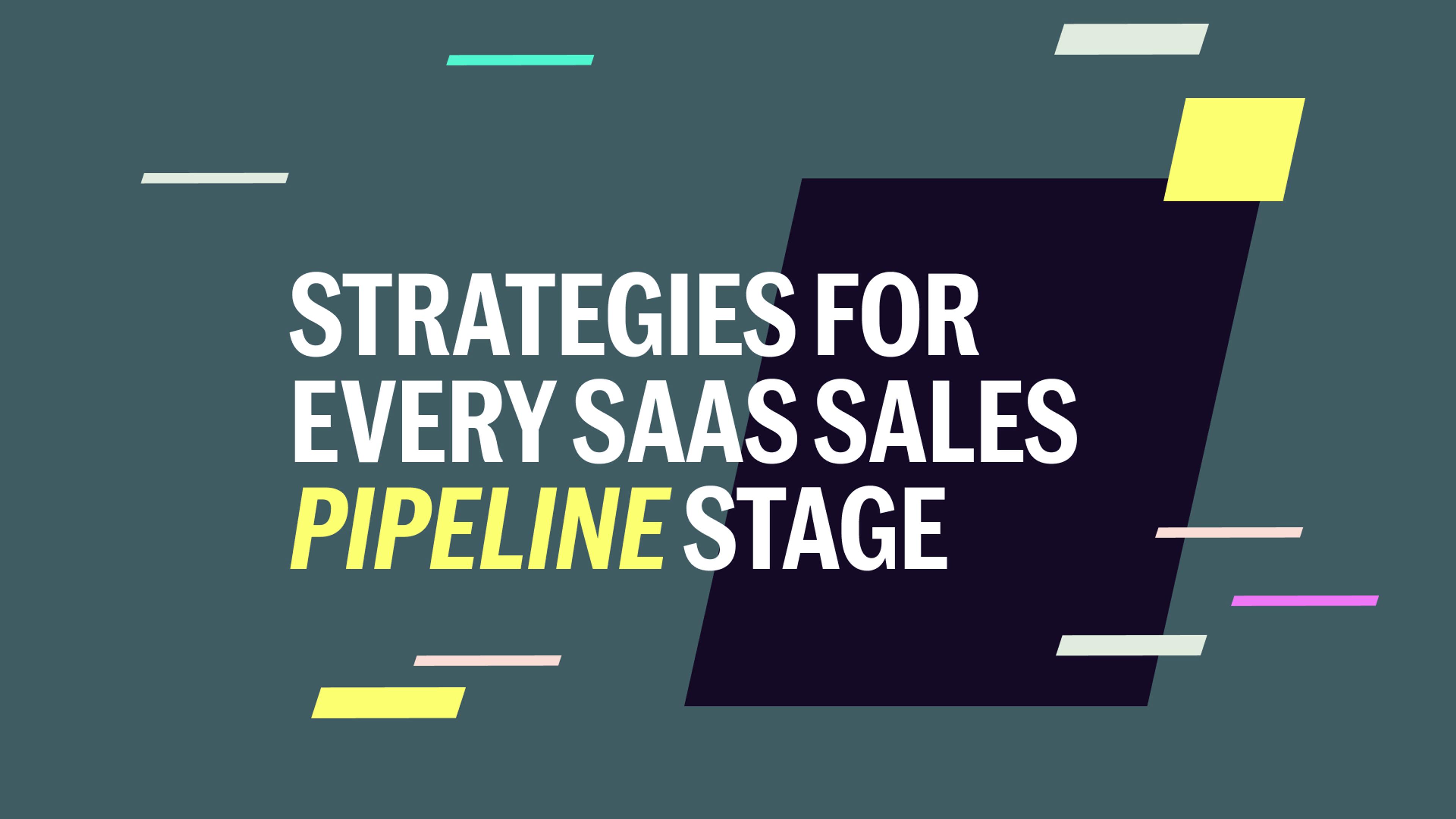
Managing multiple buyer personas while maintaining visibility across the entire pipeline requires a seamless and well-coordinated sales process so deals can progress steadily without stalling.
However, enterprise SaaS deals often involve decision-makers with competing priorities and lengthy approval processes, increasing the risk of losing qualified leads. Meanwhile, deals targeting managers bring their own challenges: Limited budgets, tighter decision-making timelines, and the need to prove immediate ROI to secure buy-in.
Without a clear framework to organize and monitor each stage of the pipeline, your sales teams risk misallocating resources, relying on unsuccessful sales tactics, and missing critical opportunities to close high-value deals.
This article breaks down the key stages of the SaaS sales pipeline and provides actionable strategies tailored to each one.
You'll learn how to approach every step—from prospecting to retention—while addressing common challenges like juggling multiple stakeholders, improving lead qualification, and accelerating deal progression.
These insights will help you build a more efficient sales pipeline that drives conversions and increases revenue.
Boost productivity and key sales metrics
Orum automates processes, informs sales strategies, and increases conversion rates.
Request a demo
Understanding the SaaS sales pipeline and its significance
A well-defined sales pipeline offers more than just visibility—it ensures your team can prioritize the right opportunities, collaborate effectively, and drive revenue growth.
With the support of tools that enable better sales tracking, automation, and strategies, you can accelerate the sales process, boost retention, and maximize CLV.
What makes the SaaS sales pipeline unique
The SaaS sales process, unlike sales in, say, retail or B2C ecommerce, is focused on long-term customer relationships and recurring revenue. These dynamics mean you have to approach your pipeline differently:
- Subscription-based revenue models: The goal isn’t just closing deals but building long-term value through renewals and upsells.
- Longer sales cycles: Complex enterprise sales often require managing multiple layers of decision-makers, which can lengthen buying timelines significantly.
- Multi-stakeholder dynamics: SaaS deals typically involve technical and business leaders with diverse objectives that must align.
- Retention as revenue: The pipeline doesn’t end with a closed deal—ongoing retention strategies are critical for sustainable growth.
These characteristics underscore the importance of tailoring your approach at each stage of the pipeline to match the nuances of SaaS sales.
Key challenges faced by B2B SaaS sales leaders
Resolving issues within your sales pipeline is critical to keeping deals on schedule, reducing your cost of sales, and ensuring prospects stay engaged.
Here are some of the common factors that delay deals, drain resources, and lower overall sales performance:
- Engaging the right personas: Reaching out with the wrong message or to the wrong person wastes time. Mapping your pipeline helps you target the right leads with messaging that makes sense for their stage in the buying process.
- Lost momentum in the sales process: Deals that linger too long in one stage risk being deprioritized by prospects. Clear stages help you identify delays and keep deals moving toward conversion with timely follow-ups and targeted engagement.
- Reducing churn risks: While churn itself occurs post-sale, the sales pipeline can influence it. Poorly qualified leads or missed opportunities to address customer needs during the pipeline stages can increase the risk of churn later. A clear pipeline helps you spot and address these issues early, improving long-term retention and upsell potential.
- Proving ROI on sales efforts: You need solid metrics to show your team’s impact. A structured pipeline provides clear visibility into how specific activities—like outreach or demos—contribute to closed deals and overall revenue.
The 7 stages of the SaaS sales pipeline
Here’s a breakdown of each stage of the SaaS sales pipeline, including:
- Actionable strategies
- Advanced AI-powered tools
- Practical insights and examples
Use this guide to optimize each step, overcome bottlenecks, and drive deals to completion.
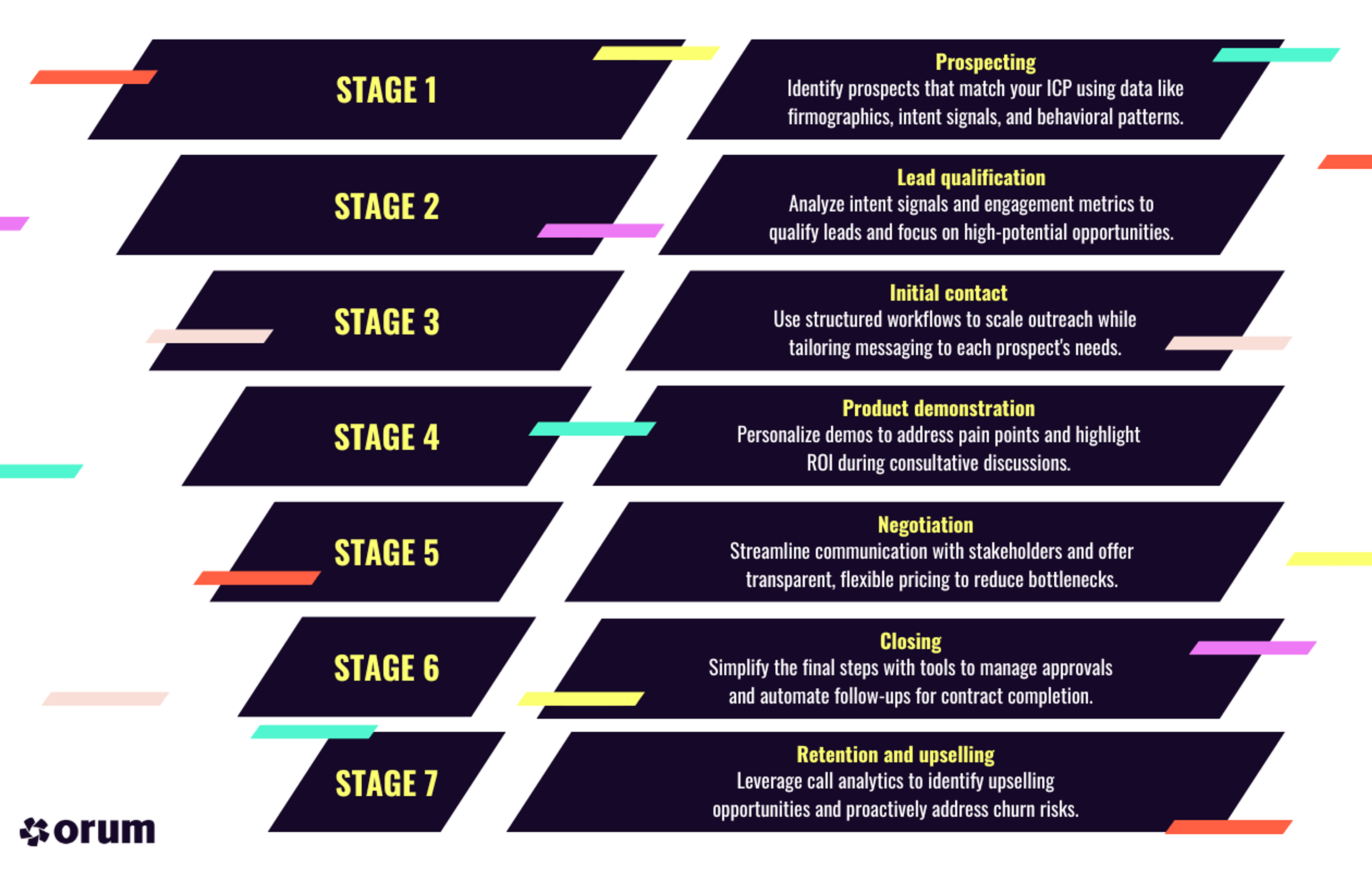
Stage 1: Prospecting for high-value opportunities
Identifying the right opportunities early helps your team focus on prospects that are most likely to convert and deliver long-term value. It also minimizes wasted time, which increases your reps’ productivity and sales revenue.
Leveraging data to identify prospects
Focus on companies that match your ICP by analyzing firmographics, intent data, and behavioral signals like recent hiring, funding, or product launches.
These data points highlight prospects who are actively growing or facing challenges your solution can solve, helping your team identify potential leads for outreach.
Building a targeted outreach strategy
Once you’ve identified high-value potential, create a strategy tailored to their specific needs and pain points.
Focus on delivering value with messaging that aligns with their role, industry, and goals. Use a combination of email, social media, and phone outreach to connect with key contacts and build engagement.
Advanced sales strategy: Streamline prospecting with CRM integrations
CRM integrations with platforms like HubSpot centralize prospect data, track every interaction, and give your team a complete view of each lead’s status.
For example, with Orum’s CRM integrations, your reps will be able to:
- Automatically sync call outcomes like connected calls, voicemails, or no answers directly into your CRM, saving time and ensuring accurate, up-to-date records.
- Update lead statuses in real-time, marking leads as new, in follow-up, or disqualified, so your team always has clarity on where prospects stand.
- Build a detailed record of each prospect’s activity by capturing key data like call attempts, conversation notes, and engagement history
This keeps the prospecting process efficient and ensures all relevant data is prepared for the qualification stage.
Stage 2: Lead qualification and prioritization
After identifying prospects, the next step is to qualify and prioritize leads to ensure your team focuses on the best opportunities.
Saas customer journeys and sales cycles can be complex, but a fully integrated tech stack simplifies the process by analyzing post-engagement activity and intent signals, helping you qualify leads accurately while maintaining efficiency.
Using analytics to streamline qualification
Leverage analytics tools to assess leads based on key indicators such as company size, industry, budget, and engagement history.
Metrics like website activity, email opens, and demo requests reveal which leads are actively exploring solutions. Automating lead scoring with these insights ensures your team focuses on leads who are likely to move forward in the pipeline.
Identifying high-value leads with buying intent
Look for intent signals that demonstrate readiness to buy, such as downloading gated content, interacting with pricing pages, or reaching out for more information.
These post-engagement behaviors help you prioritize leads who are actively evaluating options and allocate resources to nurture them effectively.
Advanced sales strategy: Prioritize high-connect prospects using Orum's Hot Numbers
Orum's Hot Numbers feature helps your team focus on leads with a higher likelihood of answering calls.
By analyzing historical data and contact behavior, Hot Numbers surfaces prospects who are more likely to engage in real-time conversations. This reduces wasted time on unresponsive leads and helps your team focus on making high-potential connections, which improves your qualification process and accelerates deal progression.
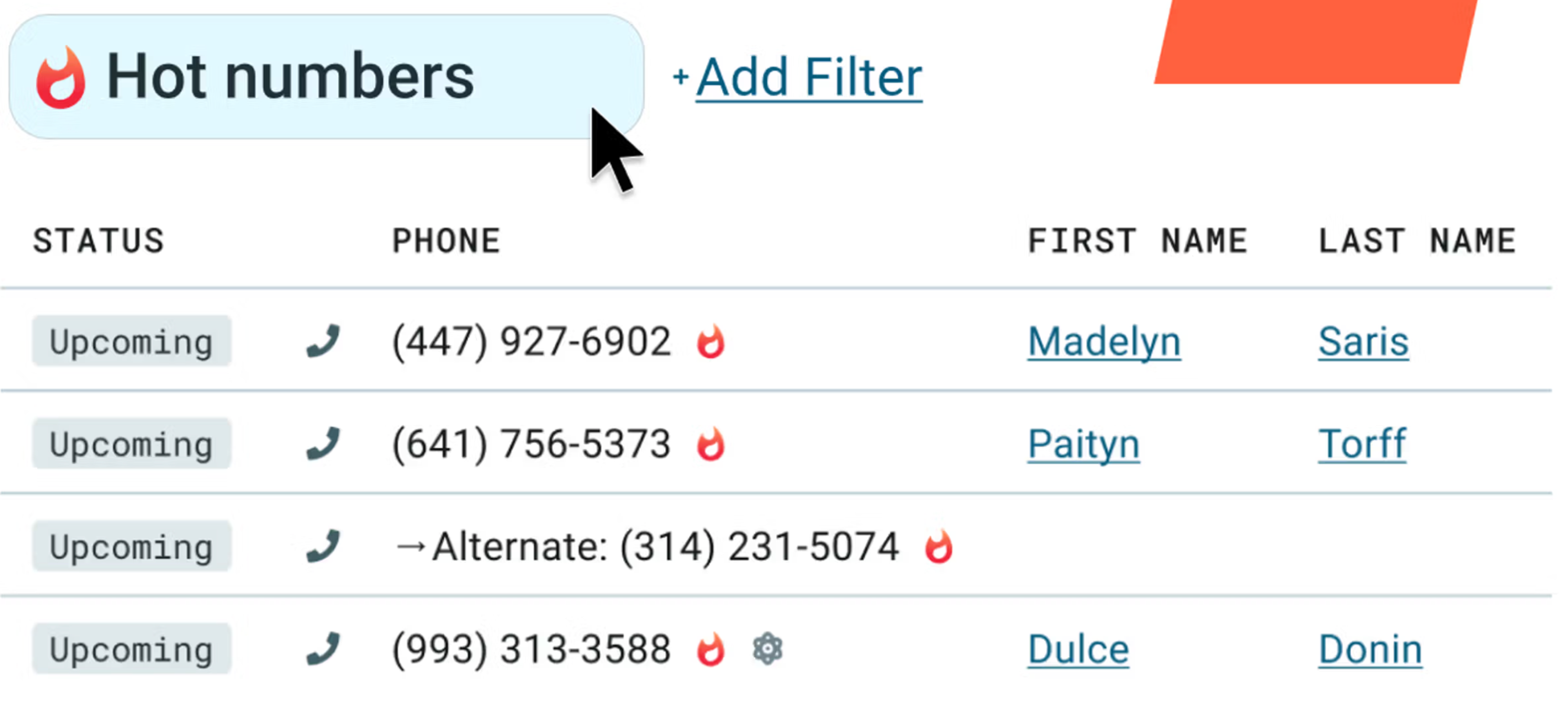
Stage 3: Initial contact and engagement
The first point of contact is critical in building trust and creating momentum in the sales pipeline. At this stage, the goal is to balance efficient outreach with a personalized approach that resonates with your prospects.
Scaling outreach while maintaining personalization
Use tools like segmented call lists to group prospects by shared characteristics, such as industry or company size, and craft messaging that speaks directly to their needs and goals.
For example, if you're targeting Directors of IT at mid-sized tech companies, you can segment your list by growth-stage businesses. Then you can tailor your messaging to address common challenges, like streamlining workflows or reducing downtime.
This approach allows you to scale outreach across similar prospects while keeping your messaging relevant.
Creating structured call workflows for sales teams
To make outreach more consistent and effective, create detailed call workflows that guide reps through each step of the process.
This includes:
- Pre-call research: Building on the prospecting stage with data collected earlier, like ICP fit and recent activities
- Opening scripts: Setting the tone and building rapport in the first few seconds
- Discovery questions: Identifying the prospect’s challenges and priorities
- Follow-up strategies: Outlining next steps to maintain engagement and guide the prospect toward qualification or a scheduled demo
Structured workflows reduce variability, help new reps ramp up faster, and ensure your team delivers a positive customer experience with every interaction.
Advanced sales strategy: Maximize productivity with Orum's AI-powered dialer
Orum's AI-powered dialer eliminates repetitive tasks like manual dialing and call logging, enabling your team to focus on having productive conversations with prospects.
By automating high-volume phone outreach, Orum helps your reps spend less time on admin and more time connecting with potential clients.

Stage 4: Product demonstration and consultation
The product demonstration is a pivotal stage in the B2B SaaS pipeline as you look to directly address your prospect’s challenges, showcase the value of your solution, and build trust to move them closer to a buying decision.
Personalizing demos to match enterprise pain points
Use the insights gathered during earlier stages—such as your prospect’s business challenges or growth objectives—to show how your solution solves their problems.
A generic demo risks losing their interest; personalization is key to making your presentation resonate.
Highlighting ROI during consultative discussions
Focus on quantifiable benefits like cost savings, time efficiency, or revenue growth, and tie these metrics to their priorities, whether that’s improving team productivity or supporting scalability.
By making ROI the cornerstone of your interactions, you can clearly demonstrate the value of your solution. This in turn equips the prospect with a compelling case for investment when they seek buy-in from other stakeholders.
Advanced sales strategy: Use dynamic demo scripts and AI-driven insights to tailor discussions in real-time
Leverage dynamic demo scripts to adapt your presentation in real-time based on the prospect’s responses. AI-driven insights can help identify the most impactful features to showcase.
Stage 5: Negotiation and deal structuring
Streamlining communication and creating proposals that align with the prospect’s goals are key to moving your leads through the pipeline.
Managing stakeholders across enterprise accounts
Engaging multiple decision-makers requires clear communication and a deep understanding of their priorities. Tailor your messaging to each stakeholder’s role, ensuring everyone sees the value your solution brings to their area of responsibility.
Building transparent, flexible pricing proposals
Offer pricing options that align with the prospect’s needs and allow for customization. Transparent proposals reduce back-and-forth and build trust by addressing budget concerns upfront.
Advanced sales strategy: Track negotiation progress with analytics to improve deal closure rates
Track deal activity with analytics by reviewing follow-ups, stakeholder responses, and progress through key decision points. This helps your team identify objections or approval bottlenecks early.
Stage 6: Closing the deal
The final stage is all about ensuring a smooth and efficient close—delays can frustrate prospects, so keeping momentum is critical.
Reducing operational friction in final steps
Simplify processes like generating proposals, collecting signatures, and coordinating handoffs to ensure everything flows seamlessly. Consolidating tools and responsibilities helps eliminate confusion among stakeholders.
Streamlining the approval process for contracts
Leverage contract tools to track approvals, set deadlines, and send automated reminders. Clear expectations and proactive communication help streamline decision-making and minimize unnecessary delays.
Advanced sales strategy: Automate follow-ups for faster contract completion
Leverage contract management tools like DocuSign, PandaDoc, or HelloSign to simplify and speed up the signing process.
These tools provide real-time visibility into the status of approvals and signatures, so you know exactly where each contract stands. Features like automated tracking and deadlines let you address last-minute questions without wasting time chasing signatures.
Stage 7: Post-purchase retention and upselling
Retention and upselling are critical for driving long-term revenue in B2B SaaS. This stage focuses on ensuring a smooth transition for new customers while identifying opportunities to increase their investment in your solution.
Ensuring seamless customer onboarding
A successful onboarding experience sets the foundation for retention. Use clear workflows to guide customers through setup and early adoption, providing support tailored to their needs so they see value quickly.
Building a framework for ongoing customer engagement
Maintain regular touchpoints to keep customers engaged and address their needs as they evolve. Use a mix of check-ins, educational content, and personalized updates to build stronger relationships over time and create loyalty.
Advanced sales strategy: Use call analytics to identify upselling opportunities
Leverage call analytics, including insights surfaced through Orum’s tracking capabilities, to identify patterns such as high connect rates or meeting dispositions that signal upselling potential.
These data points enable your team to position upgrades effectively while addressing risks that could lead to churn.

Using SaaS sales pipeline stages to impact key metrics
Optimizing how you manage each stage of the SaaS sales pipeline ensures your team works efficiently, reduces bottlenecks, and drives better results.
From prospecting to retention, having a structured, cohesive approach throughout the pipeline lets you focus on high-value opportunities so you can improve conversion rates and increase CLV.
Orum’s AI-powered dialer, CRM integrations, analytics, call library, and virtual salesfloor enhance this process by:
- Automating repetitive tasks
- Increasing productivity
- Providing actionable insights
- Enabling data-driven decisions
- Creating a focused, motivated sales environment
Whether your goal is to streamline prospecting, prioritize leads, or improve engagement, Orum’s tools and integrations help your team save time, stay organized, and close deals faster.
Boost productivity and key sales metrics
Orum automates processes, informs sales strategies, and increases conversion rates.
Request a demo
